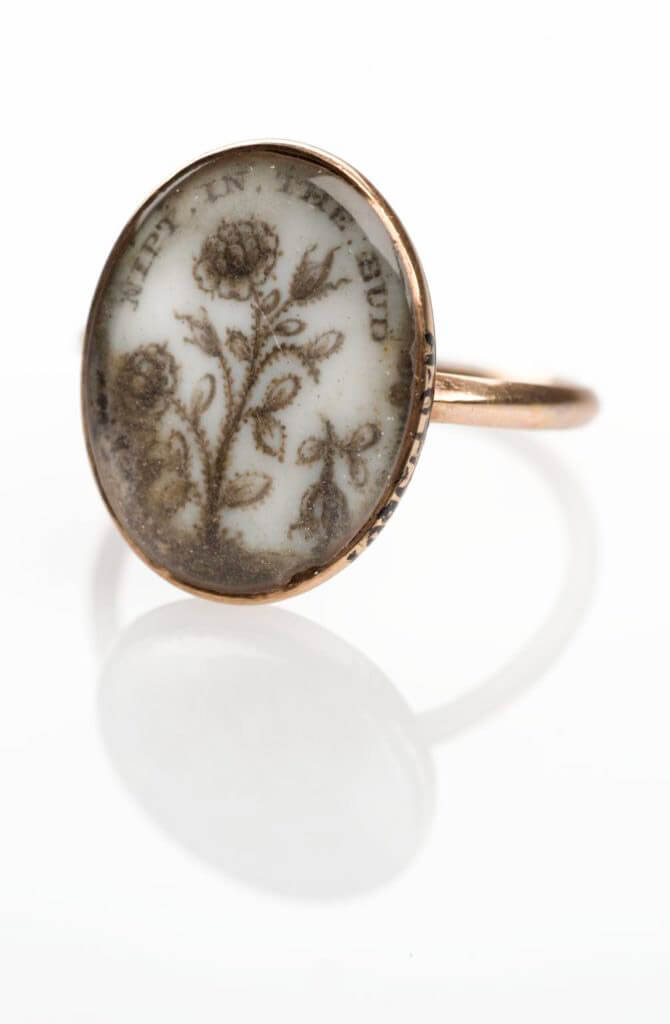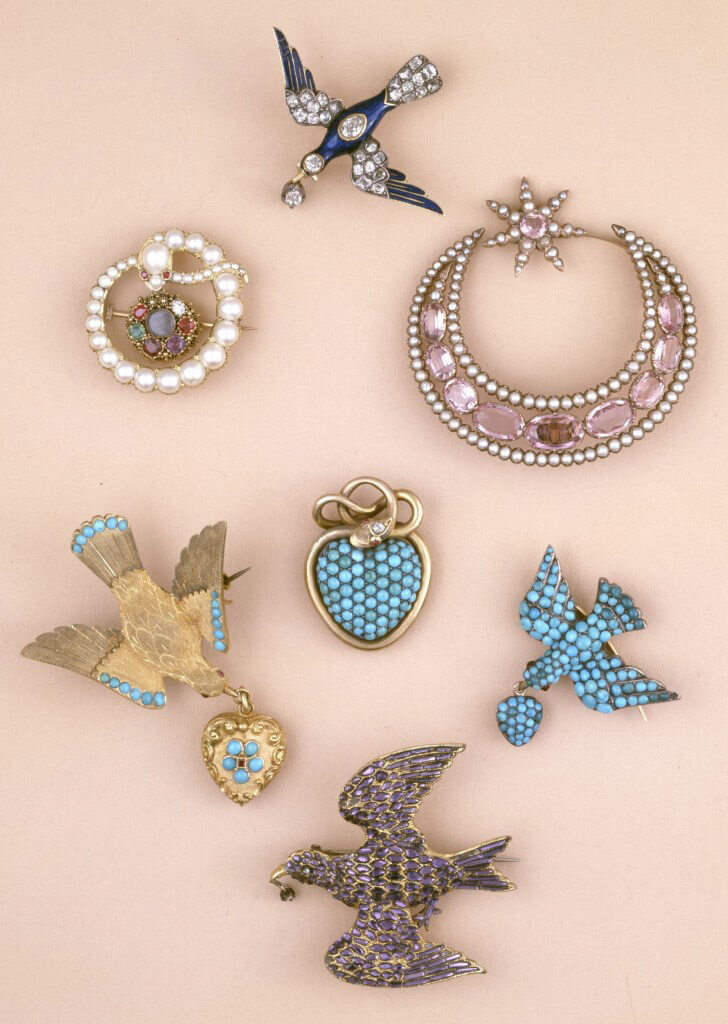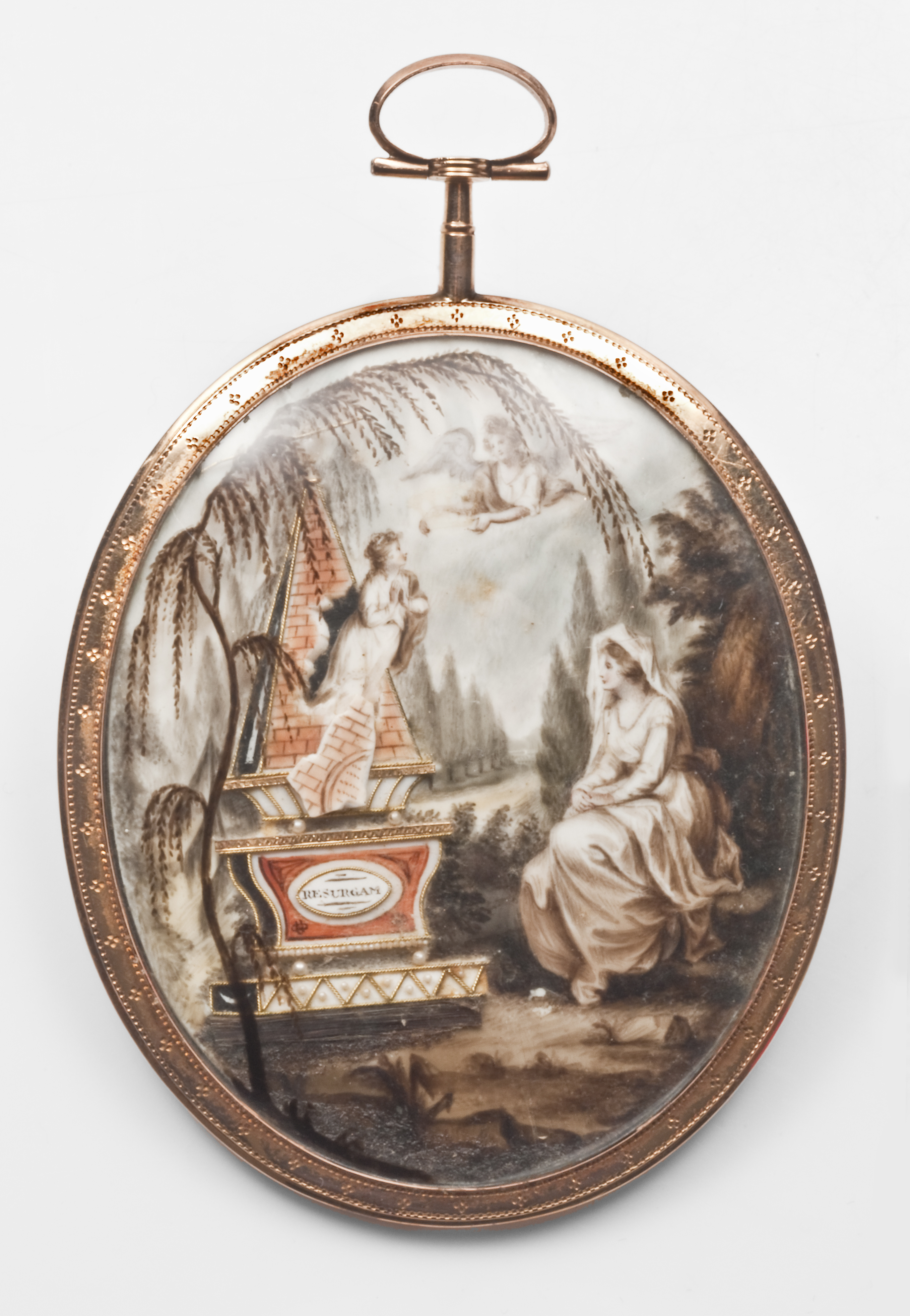Colour Theory: Part 1
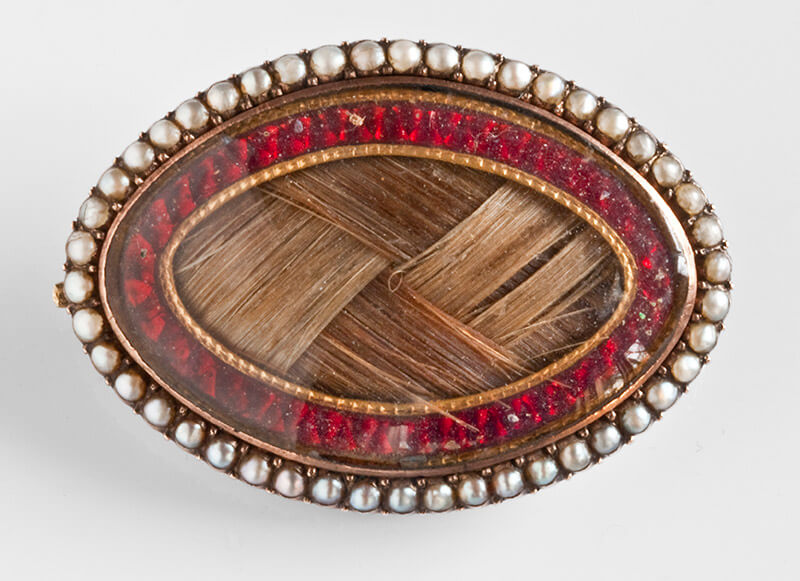
Colour and theory is important to us today, with the view that colour and sentimentality were ingrained in the human mind since cultural inception. Colour theory is mostly a modern invention, popularised through science and observation.
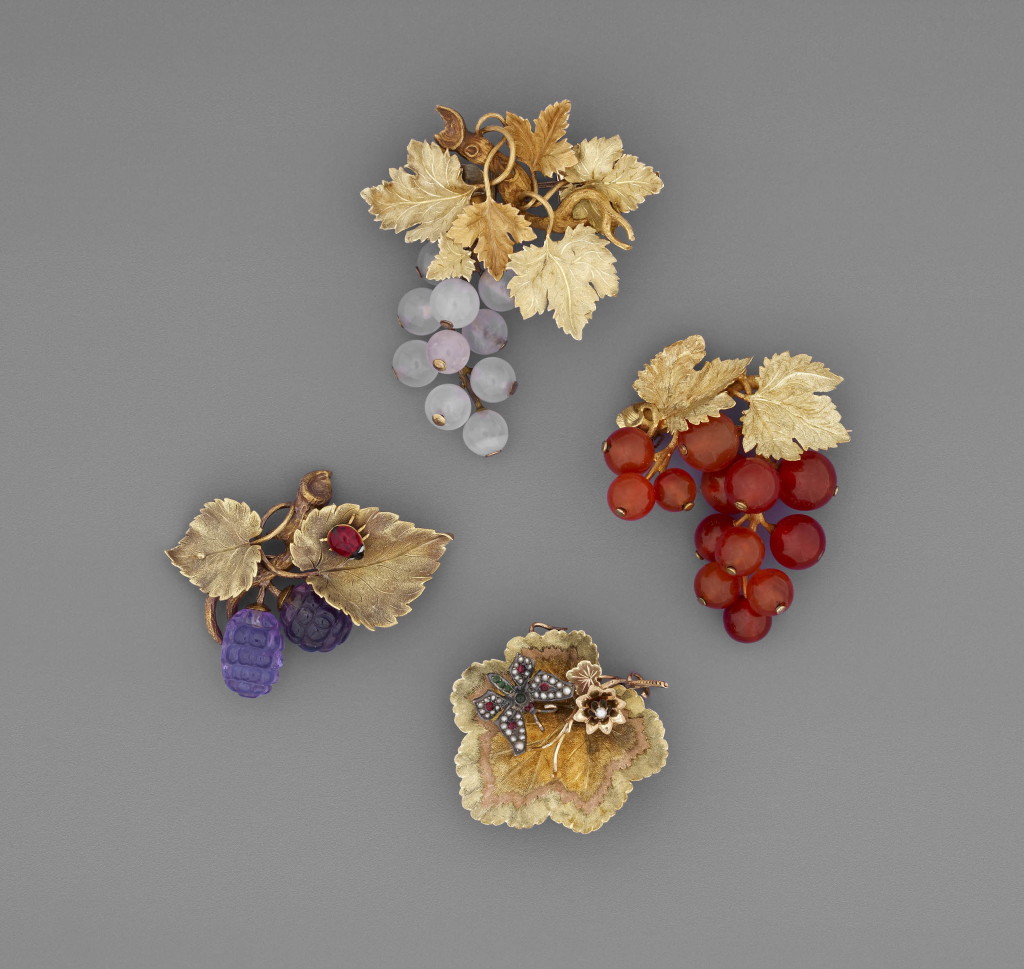
Colour theory is important to the jewellery collector for its value in understanding early-modern jewels. Jewels from the 19th century related closely to a sentimental pattern, which used a colour, theme or design as a literal correction to human feeling. For us to interpret these design elements, we need to understand what they meant in their time.
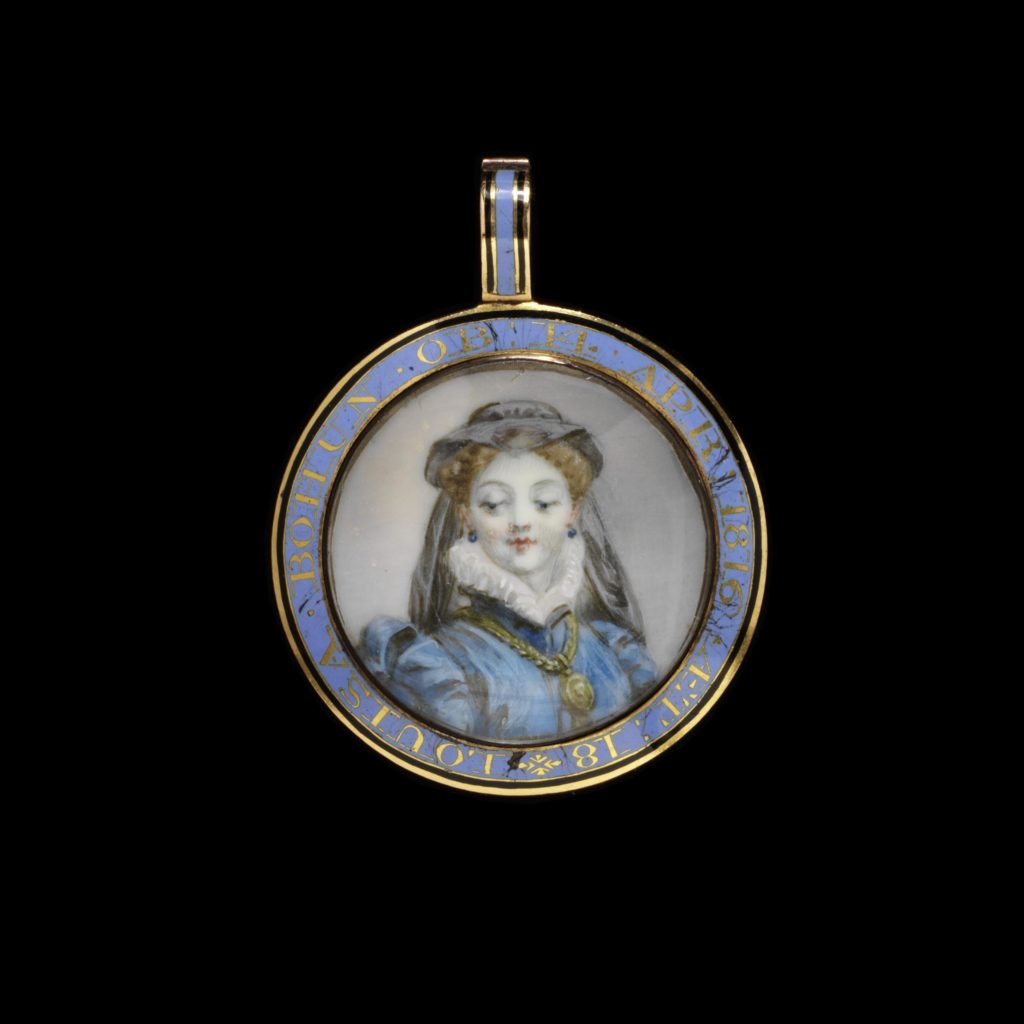
Jewels from the c.1550-c.1760 period, outside of the colours black (death), white (virginity/purity), blue (considered royalty) and red (passion), need further interpretation, but in the late 18th to early 19th century, there’s more clarity in what their meanings are, due to studies and publishings of the time.
Johann Wolfgang von Goethe’s Theory of Colours is an important resource for the mourning jewellery collector, as it details much of the colour theory that would influence the style, construction and fashion of mourning and sentimental jewellery.
Published in 1810 (German) and 1840 (English), the book is not a reference for sentimental meaning, but a scientific approach to how colours were perceived. The book does deal with shadows, refraction and light spectrum, but applies this to how the human mind processes the data. It was a rebuttal to Issac Newton’s optical spectrum based on Goethe’s own findings.
Colour and psychology come together in Goethe’s theory, through the theory that colour provokes emotion. His symmetric colour wheel (below) shows that each colour demands the complement of a correlating colour, as the gradients go down, they still relate back to the parent colour. Goethe’s theory highlighted the important of magenta, which can be seen at the top of the chart:
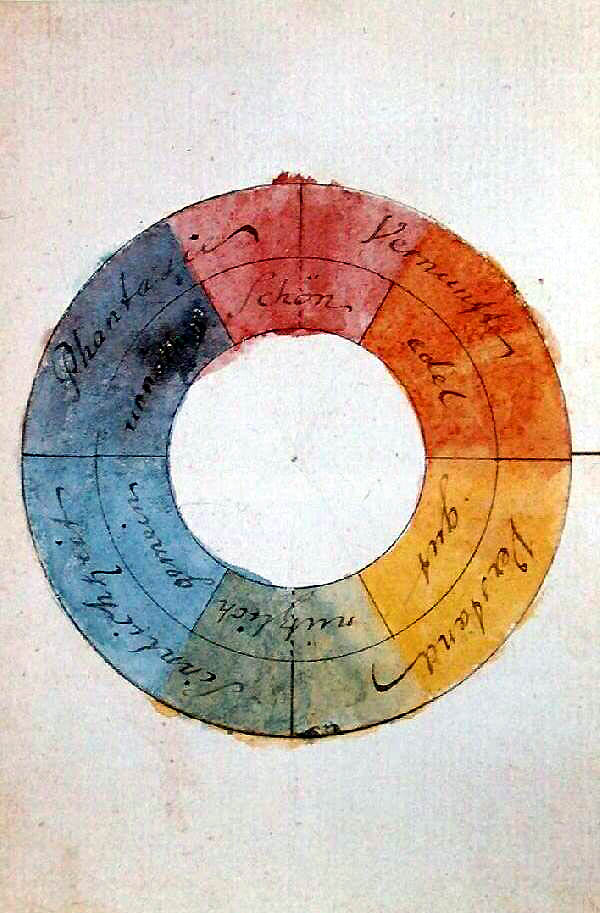
Goethe and Schiller developed another chart, “allegorical, symbolic, mystic use of colour” (Allegorischer, symbolischer, mystischer Gebrauch der Farbe), which linked colours to psychological reaction. The effect of this was important for the arts, fashion and jewellery.
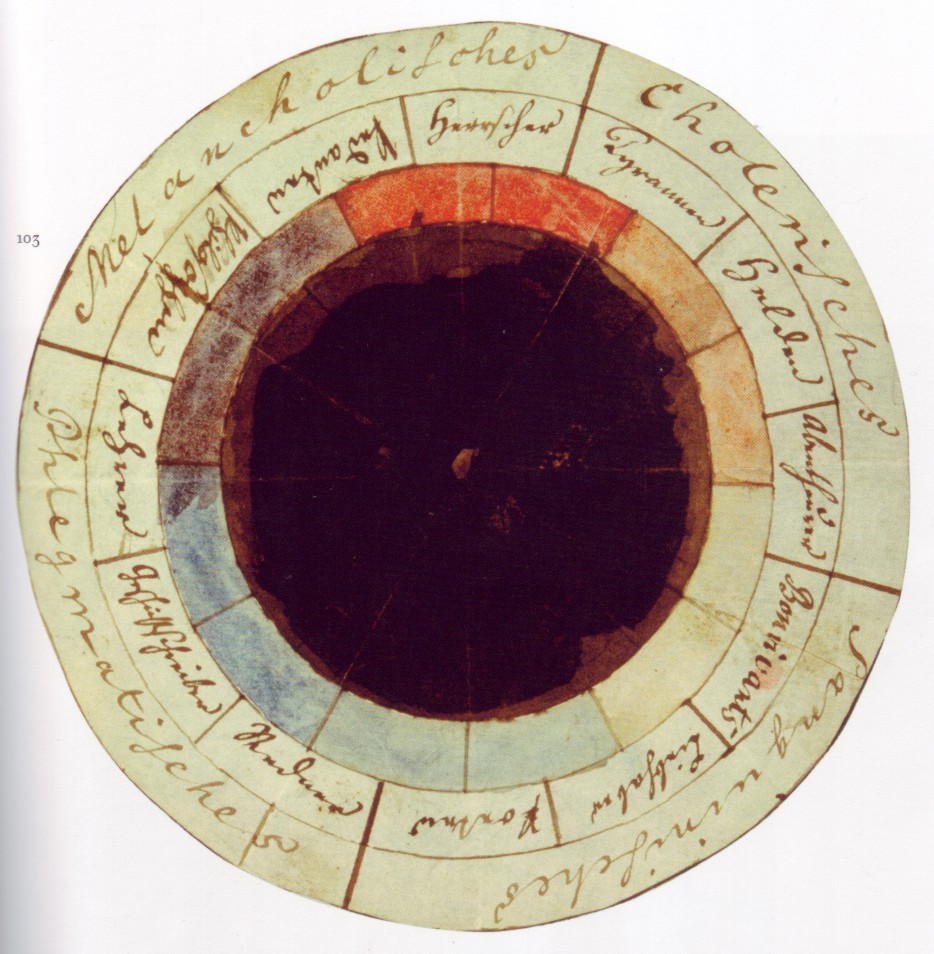
While the controversy about Goethe’s work was its challenging of Newton, he was a popular figure in the late 18th century for his literary and scientific work. The effects his 1774 book, The Sorrow’s of Young Werther influenced mourning symbolism in its use of the willow and urn, which were taken from Neoclassicism. As the book spread across Europe, so did the common symbols in its publishing, making them common and fashionable.




